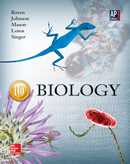1 A) Low pH decreases the amount of H+ ions for the plant to use. B) At low pH, rocks release aluminum, which is toxic to many plants. Also, aluminum can combine with other nutrients and thereby make them inaccessible to plants. C) Low pH soil dissolves cell membranes, causing them to fall apart. D) Low pH in soil retards enzyme activity much as cold temperatures do. E) None of the choices are correct. 2 A) Plants won't get enough light. B) Pollination can't occur using hydroponics. C) Aeration of roots can be compromised if immersed for too long. D) Insect pollination can never happen in a hydroponic environment. E) Leaves can get infected with mold because of the high humidity. 3 Rhizobium requires assistance from a plant (usually a legume) in order to grow. Much of it is in the form of ATP derived from organic molecules provided by the plant. Why is so much energy required by Rhizobium during its mutualistic behavior?A) Rhizobium requires much energy with which to transfer oxygen to itself from the host plant.B) Rhizobium require much energy with which to transfer carbohydrates to itself from the host plant.C) Rhizobium uses much ATP in making an infection thread in the host.D) The bacterium needs much ATP in order to produce sugar-containing nod factors. E) The triple-bond in N2 gas is hard to break. The plant makes this possible by donating ATP for the necessary energy. 4 2 , what else must be considered in order to maximize growth?A) There must be less oxygen in the atmosphere. B) More stomata must be created to allow enough CO2 to enter plants to make a difference. C) Cellular reserves of sugar must increase to make enough RuBP to allow more fixation of CO2 . D) Plants must have larger leaves to be able to benefit from the higher levels of CO2 in the air. E) In the Duke Experimental Forest plants developed more biomass in the carbon dioxide enhanced enclosures if the soil supplied enough nitrogen 5 A) The plants will become radioactive. B) Soil water will become toxic from the plant's metabolic activities related to the pollution. C) If the plants are not removed quickly enough, much of the material will diffuse back into the soil. D) Animals could be harmed if they graze in an area where plants have taken up high levels of toxic compounds. E) Plants used for phytoremediation may be consumed by humans. 6 A) They must be positively charged. B) They must be negatively charged. C) They must be dissolved in water. D) Soil particles must have adsorbed them. E) The must be transferred across the cell membranes of the root by proton pumps. 7 A) phosphorous; component of ADP and ATP, nucleic acids, phospholipids, several coenzymes B) sulfur; a major component of most organic molecules C) potassium; a component of chlorophyll molecules D) magnesium; helps regulate stomatal opening E) nitrogen; opens stomata 8 A) meat B) mucilage C) sugar-rich secretions D) nitrogen E) leghemoglobin 9 A) increased C4 carbon fixation B) increased photorespiration C) increased production of RuBP D) increased production in glucose E) increased efficiency in photosynthesis 10 A) The shoot, because it experiences wind currents that carry the toxins toward it. B) The leaves, because gas exchange through their stomata can filter impurities. C) The vascular system, because it cycles large amounts of fluids in a short amount of time. D) The roots, because their endodermis is exposed to all chemicals entering the vasculature. E) The epidermis of leaves, because they have a very large surface area. 11 A) contaminates the poplar trees that metabolize it B) is carcinogenic C) highly volatile D) cannot by phytoremediated E) metabolized by poplar trees into carbon dioxide and chlorine gas 12 A) rhizomes B) trichomes C) stomates D) sclerenchyma E) root nodules 13 A) mixing crops in a field, intercropping B) no till C) minimal till D) All choices are correct. 14 A) Growth patterns deviate from the norm. B) Leaf coloration deviates from the norm C) Micronutrient uptake deviates from the norm. D) Plants do so much better in hydroponics, making it an attractive commercial approach. E) They are suspended with their roots in a nutrient solution of aerated water. 15 A) turgor pressure B) many sensitive hairs on the two halves of a leaf C) curved geometry of the leaf D) movement of the prey E) The mechanism behind the movement of the Venus flytrap is unknown. 16 A) phytovolatilization B) phytodegradation C) phytoaccumulation D) All of the choices are correct. 17 A) Contamination is found around factories that made TNT. B) TNT is a carcinogen. C) TNT settles into soil. D) The concentration at which TNT can be degraded by plants is limited to low values. 18 A) true B) false 19 A) If soil nutrients remain the same, herbivores will have to eat more biomass to meet their protein needs. B) If herbivores were to eat more biomass, insect infestations will increase. C) If soil nutrients remain the same, protein deficiencies could result. D) The carbon:nitrogen ratio will decrease. 20 A) iron: chlorophyll synthesis B) zinc: nitrogen fixation C) chlorine: cytochromes D) copper: nucleic acid synthesis 21 A) Water potential is altered B) Plants lose turgor pressure. C) Plant growth is limited. D) With an abundance of rain, desertification is likely.





